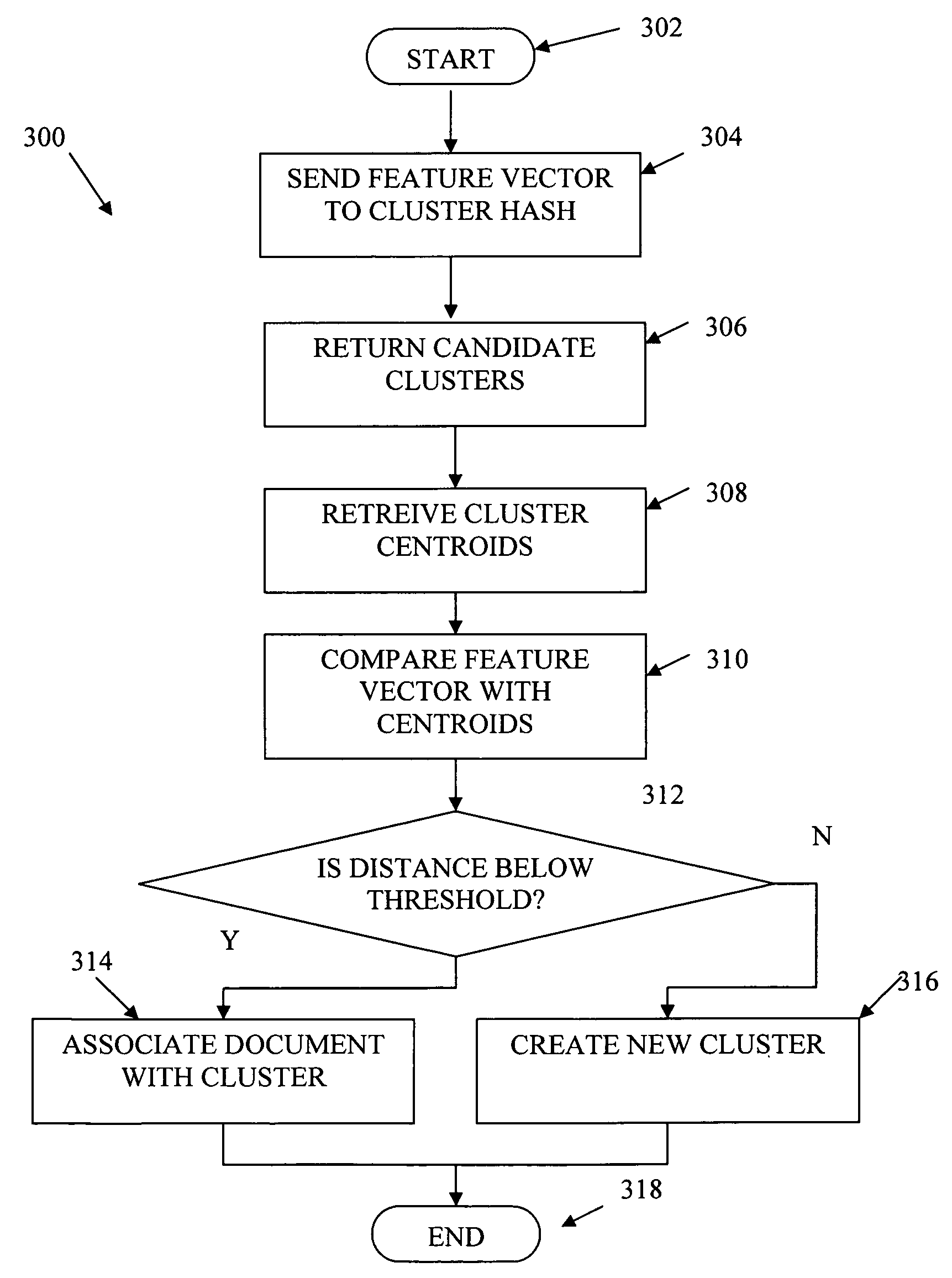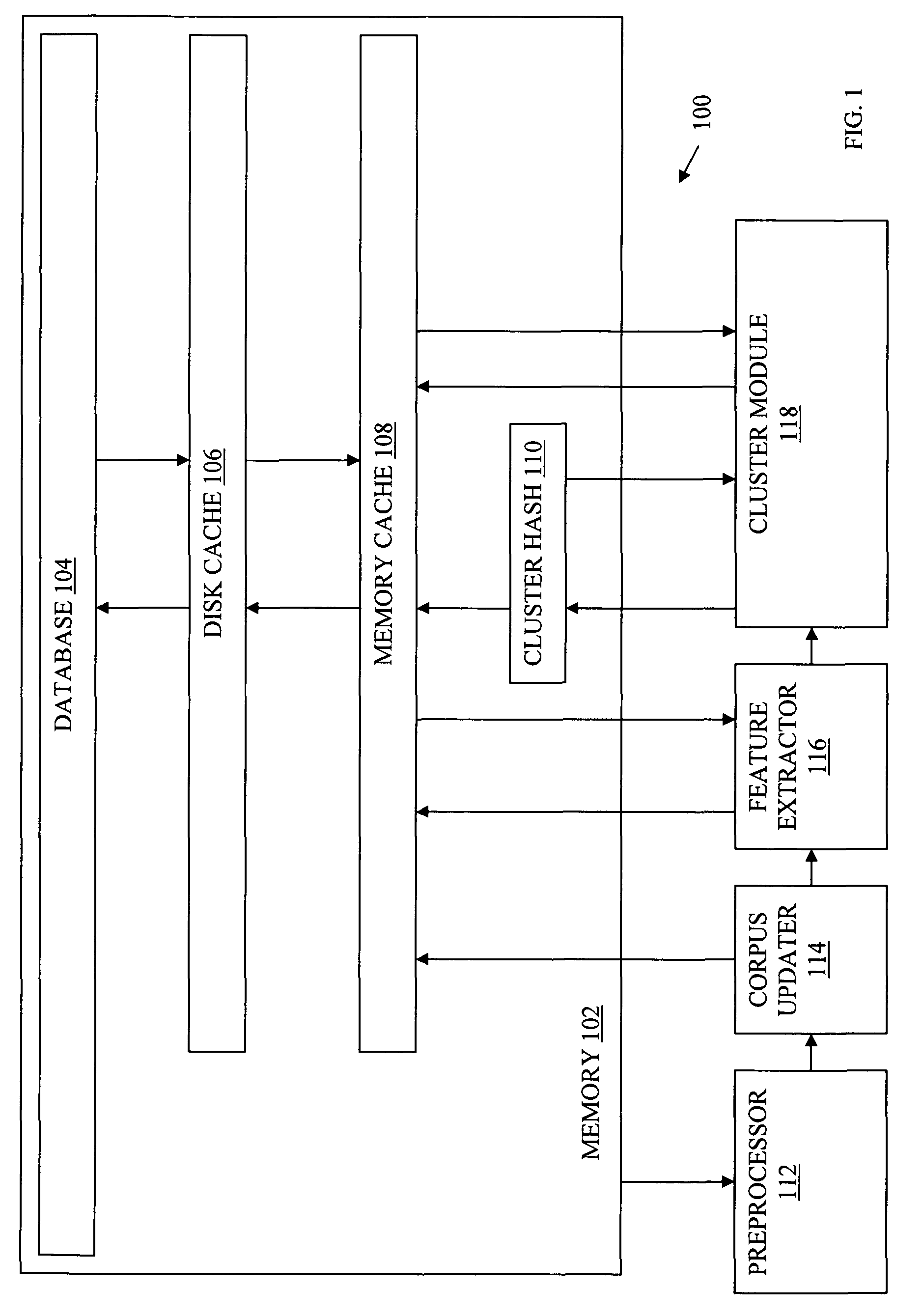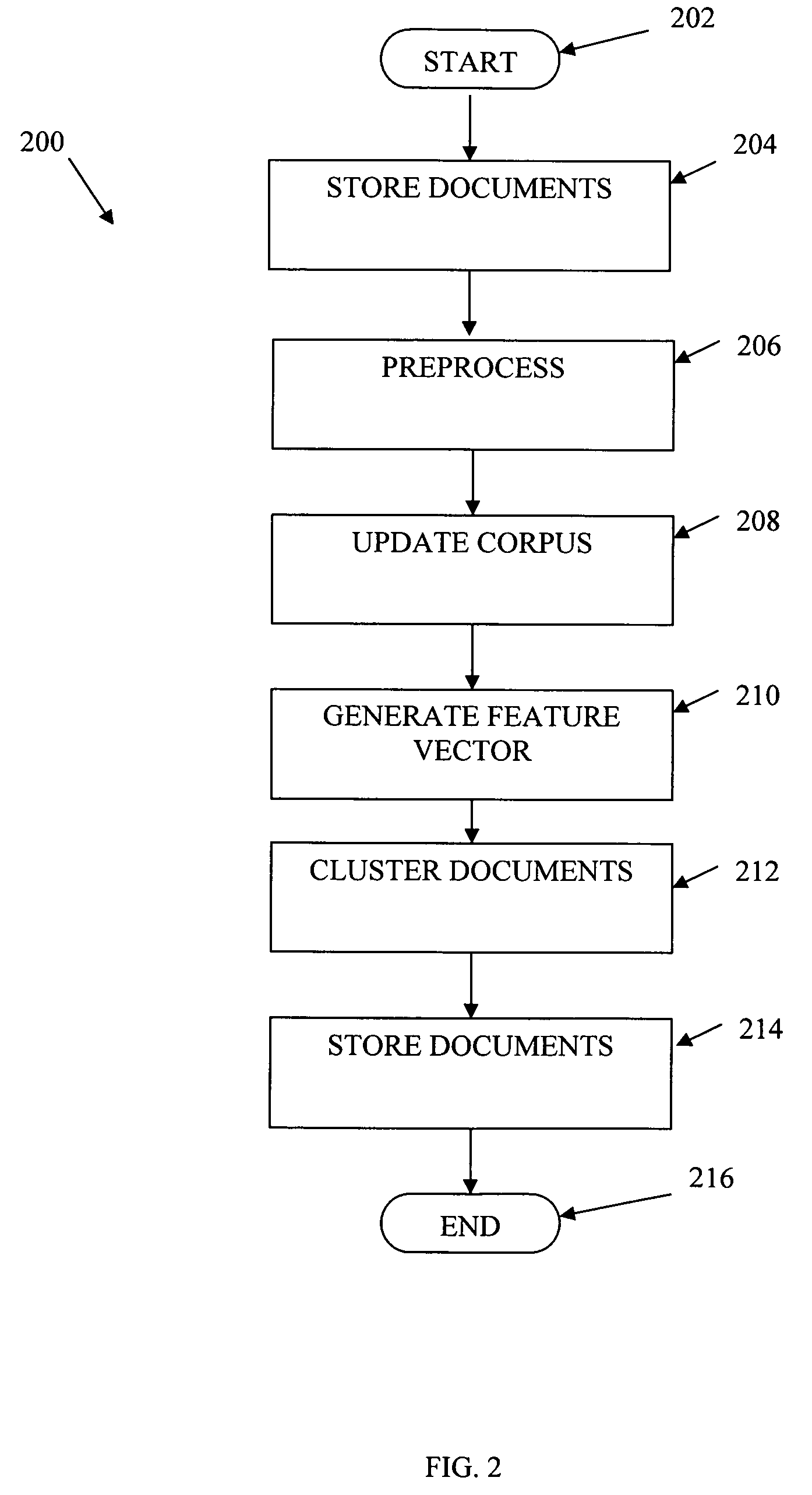Document clustering that applies a locality sensitive hashing function to a feature vector to obtain a limited set of candidate clusters
a clustering and feature vector technology, applied in the field of data clustering, can solve the problems of increasing the clustering rate of the system, increasing the workload of the system, and requiring more memory, and achieve the effect of enhancing the speed of the document clustering
- Summary
- Abstract
- Description
- Claims
- Application Information
AI Technical Summary
Benefits of technology
Problems solved by technology
Method used
Image
Examples
Embodiment Construction
[0017]The present invention generally provides methods and apparatus for online document clustering. Specifically, the present invention provides methods and apparatus for efficient, accurate clustering of documents from continuous high density data streams. For simplicity of presentation, the present invention will be described in terms of a news clustering system and method, though one of skill in the art would recognize how to use the invention described herein in clustering of other documents from blogs, scientific publications, business related publications, or other structured information, such as in image analysis, bioinformatics, etc.
[0018]Accordingly, the term “document” as used herein may be interpreted as any object, file, document, article, sequence, data segment, etc. Documents, in the news article clustering embodiment described below, may be represented by document information such as their respective textual context (e.g., title, abstract, body, text, etc.) and / or as...
PUM
 Login to View More
Login to View More Abstract
Description
Claims
Application Information
 Login to View More
Login to View More - R&D
- Intellectual Property
- Life Sciences
- Materials
- Tech Scout
- Unparalleled Data Quality
- Higher Quality Content
- 60% Fewer Hallucinations
Browse by: Latest US Patents, China's latest patents, Technical Efficacy Thesaurus, Application Domain, Technology Topic, Popular Technical Reports.
© 2025 PatSnap. All rights reserved.Legal|Privacy policy|Modern Slavery Act Transparency Statement|Sitemap|About US| Contact US: help@patsnap.com



